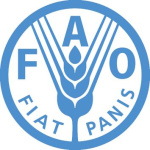- Industry: Agriculture
- Number of terms: 87409
- Number of blossaries: 0
- Company Profile:
Established in October 1945 with the objective of eliminating hunger and improving nutrition and standards of living by increasing agricultural productivity, FAO coordinates the efforts of governments and technical agencies in programs for developing agriculture, forestry, fisheries, and land and ...
DNA sequences that are present in a genome in multiple copies, sometimes a million times or more.
Industry:Biotechnology
DNA that has been derived from a source organism and has been cloned into a vector and introduced into a host cell. Also referred to as foreign DNA or heterologous DNA.
Industry:Biotechnology
DNA-containing bodies in the cell but external to the nucleus.
Industry:Biotechnology
Drooping of stems and foliage due to loss of water and decreased turgidity of cells. May be caused by water stress or by disease.
Industry:Biotechnology
Duplex DNA that has been converted to single strands by breaking the hydrogen bonds of complementary nucleotide pairs. Usually achieved by heating.
Industry:Biotechnology
Duplication of chromosomes without division of the nucleus, resulting in increased chromosome number within a cell. Chromosome strands separate, but the cell does not divide.
Industry:Biotechnology
During DNA duplication, each strand of a parent DNA molecule is a template for the synthesis of its new complementary strand. Thus, one half of a pre-existing DNA molecule is conserved during each round of replication.
Industry:Biotechnology
During extraction of plasmid DNA from the bacterial cell, one strand of the DNA becomes nicked. This relaxes the torsional strain needed to maintain supercoiling, producing the familiar form of plasmid.
Industry:Biotechnology
During extraction of plasmid DNA from the bacterial cell, one strand of the DNA becomes nicked. This relaxes the torsional strain needed to maintain supercoiling, producing the familiar form of plasmid.
Industry:Biotechnology
During the ligation reaction with cDNAs of light and heavy antibody chains into a bacteriophage lambda () vector, many novel combinations consisting of one heavy and one light chain coding region are formed. The library comprises these combinations, each in a separate vector.
Industry:Biotechnology
